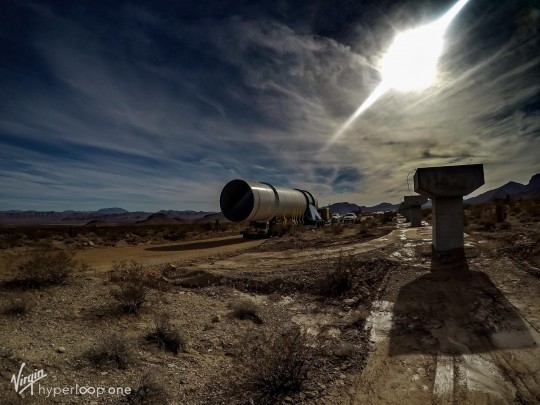The two are Elon Musk and Richard Branson. Their companies, SpaceX and Hyperloop One. Their history: separate, yet intertwined. HOW IT CAME TO BE
The whole modern hyperloop idea belongs to one guy: Elon Musk. Having toyed with the thought of the Hyperloop system for quite some time, he shares his vision with investor Shervin Pishevar. The two soon entered into a competition that may come to change the world.
In 2013, Elon Musk published what became known as the Hyperloop Alpha paper, a 58-page document describing the hows and whys of a hyperloop system. The paper ends up, via Pishevar, in the hands of then President Barack Obama, who expresses his support for the project.
A year later, as Musk was already starting to think how to make the Hyperloop a reality, Shervin gathers a crew with which he establishes a new company, Hyperloop Technologies. The name of the entity is changed to Hyperloop One in 2016. Hit by sexual harassment allegations in 2017, Pishevar takes his leave and hands over control of the company to Richard Branson and his Virgin group.
Now, based on Musk’s initial idea, the two entrepreneurs are head to head, racing us to the future.HOW IT WORKS
The Hyperloop system is a very simple one. It comprises in essence two elements: a vacuum tube, be it underground or otherwise, a capsule to travel through it carrying people or cargo.
In theory, the capsules, or pods, are to be sent shooting through a partially vacuumed tube by some means of magnetic propulsion. In Elon Musk’s case, that means of propulsion is comprised of linear induction motors, while Branson’s company is going for passive magnetic levitation. For use at speeds of under 100 miles per hour (160 km/h), the pods could be fitted with wheels.
The key to the whole thing is the vacuumed tube, which in theory could be achieved by using pumps to suck the air out of the tube. Once that is achieved, the pods can be accelerated by whatever means to a top speed of 760 mph (1,220 km/h).
The proposed system would make the nearly six-hour trip from Los Angeles to San Francisco last only 35 minutes, SpaceX predicts. Hyperloop One’s Indian network of tubes would take travelers from Pune to Mumbai in as little as 25 minutes. This trip usually takes a little over three hours.
DIFFICULTIES

There are several things going against the predicted success of a hyperloop system. The first would be the fact that, for a buried network of tubes, some serious, expensive and time-consuming digging would have to be done.
Secondly, the two companies would have to develop a pump system for the creation of vacuum in the tubes better than anything currently in use. Musk theorizes that hard or near hard vacuum be very hard to maintain, so the tubes would likely have to use a low-pressure system.
Thirdly, there is the Kantrowitz limit. In gas dynamics, this states that when a fluid flow experiences a reduction in area, the flow speeds up to maintain the same mass flow rate. Simply put, it is the maximum amount of contraction a flow can experience before it chokes.
For the Hyperloop system, the Kantrowitz limit would mean either the creation of a tube with a huge diameter (expensive and hard to do) or designing the pods to go very slowly, thus defeating the point of the entire system.
Musk proposed a third solution to go around this problem: mounting an electric compressor fan on the nose of the pod that actively transfers high-pressure air from the front to the rear of the pod.
A fourth bump in the road for hyperloop is the cost. Musk estimated each pod would cost $1.35 million. The entire passenger system would send SpaceX or Hyperloop One back $6 billion for the passenger-only version, or $7.5 billion for the pods capable of carrying vehicles as well. It's not easy to predict how much digging for the tubes would cost.HOW CLOSE ARE WE?
Far, far away. Musk’s idea of having the project operate as an open source idea has drawn several other companies to the task.
Hyperloop Transportation Technologies comprises 800 engineers from all over the world working on a solution to Musk’s proposed idea. Canadian TransPod is working on creating both tubes and capsules. The Indians from DGWHyperloop do the same thing in their part of the world. So do Arrivo, Hardt Global Mobility, Hyper Chariot and Zeleros.
Still, there is a good chance that, out of the millions of crazy ideas out there, this one will not become a reality during our lifetime. And perhaps not even our grandchildren’s lifetime.
Trying to speed up the development of functional prototypes, SpaceX announced in 2015 the Hyperloop Pod Competition, intended to stir university teams into designing and building pods. There were two competitions until now, held in January and August 2017.
The 2018 Hyperloop Pod Competition challenges teams to achieve a maximum speed with their pods. The final will take place on July 22, 2018.








